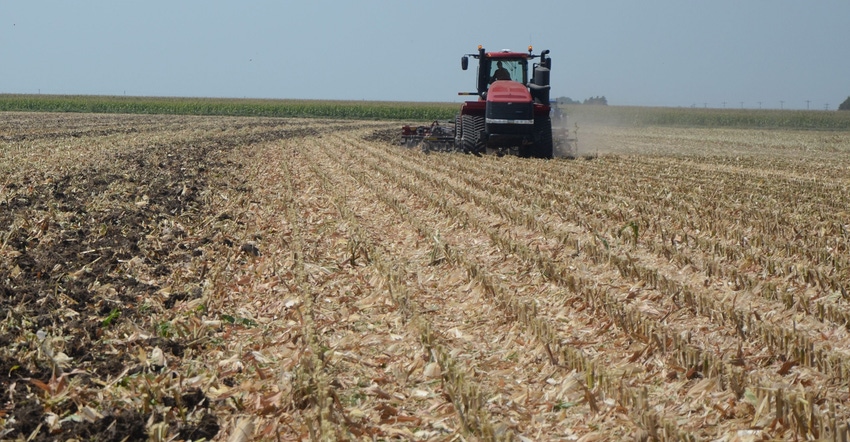November 10, 2022

Can tillage practices affect insect pressure?
In one word, yes. Since the 1970s acreage has continued to shift from conventional tillage to conservation tillage to help reduce erosion and increase water retention. Conservation tillage has many benefits, but the increased crop residue (Figure 1) can harbor insects. Reduced tillage can result in unincorporated corn residue and weeds in the field, which provide a habitable environment for black cutworm moths. Crop residue coupled with cool and wet conditions can favor an increase in slug populations. Grasses can attract egg-laying armyworm and stalk borer moths. Grassy weeds and undisturbed soil can increase the survival of white grubs and wireworms.1 Grasshoppers are able to find cover in weedy fields.
Is it necessary to switch conservationally-tilled fields to conventional tillage?
In one word, no. There are many ways to help reduce insect damage without forfeiting the benefits of conservation tillage. Weed management, crop rotation, planting and harvest timing, and trait selection can help lower insect pest pressure without switching tillage practice. For some insects, reduced tillage can help lower insect populations. Seedcorn maggot adult flies prefer to lay eggs in partially incorporated corn residue. No-till corn may help reduce seedcorn maggot populations.1 Crop residue can provide habitats for many beneficial insects and spiders that can help reduce pest populations.2 The many benefits of conservation tillage would not warrant a switch to conventional tillage for the purpose of insect management.
Source:DeKalb Seeds
Read more about:
Crop ConditionsYou May Also Like




